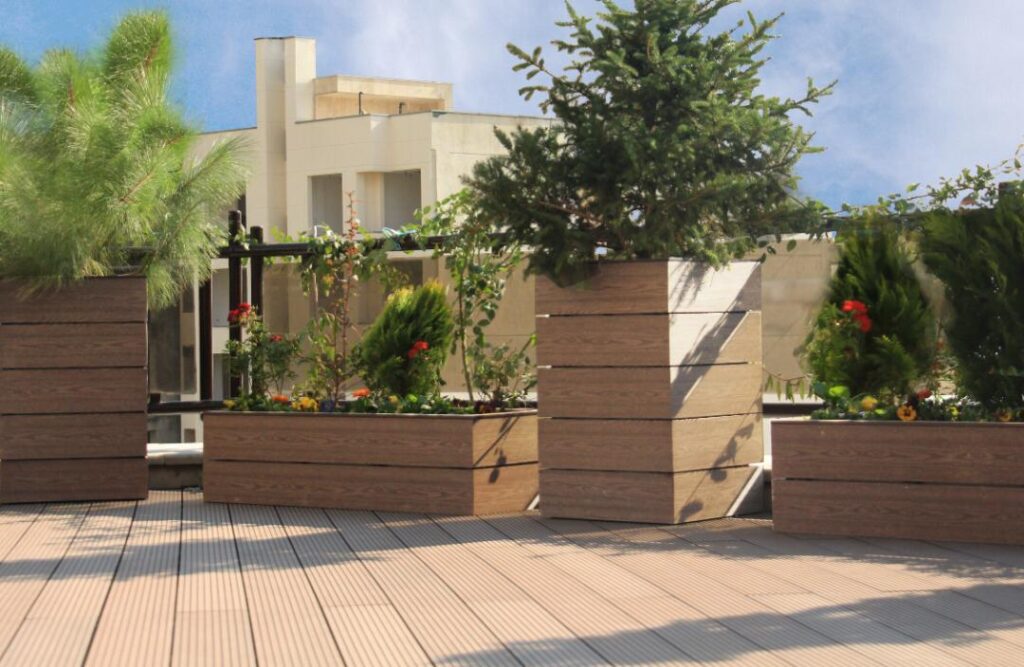
Wood-plastic is a composite material. made by the combination of wood powder/fibers with plastics. It is a waterproof and insect resistant material which neither corrode nor rot. What is more, it does not need to be painted or oiled and is molded and produced. in a variety of desired textures and designs.
By adding minerals and pigments to the structure of this composite, products with desired colors can be produced. Wood-plastic composites are new materials compared to the timber used by humans for construction for many years. Composites are materials that are made from a combination of two or more other materials to have the desired properties.
Wood-plastic composites were first introduced to the decking industry about thirty years ago. Manufacturers believe that Wood-plastic composites are more environmentally friendly than other wood alternatives and require less maintenance care. In the United States, plastic is mostly used in outdoor flooring and many other applications such as railing, fencing, covering and maintenance, beautification, park benches, windows and door frames, and interior furniture.
Depending on the application of Woodplastic composites, materials such as binders, pigments, UV stabilizers, lighteners, and oils are used in its production.
The most common method for producing woodplastic composites with different cross-sections is the use of the extrusion method, in which wood particles and thermoplastic plastics are mixed and heated together and then removed from the mold in the desired shape. With wood plastics that are produced by the extrusion method, custom profiles can be produced for various applications.
Injection molding is another method of producing wood-plastic composites. Using the injection molding method, wood-plastic composites parts can be produced for various other applications, from the inner lining of the car door to the protective frame of the mobile phone.
The same mechanical tools that are used to work with wood can also be used for wood-plastic composites. Wood-plastic composites are known as sustainable materials by considering the fact that, after a life cycle, one wood-plastic composite can be easily recycled into another wood-plastic composite. Wood-plastic composites can also be produced from recycled plastic and wood that cannot be used in the wood industry anymore.
and one of the significant advantages of wood-plastic composites over woods
is that they can be produced in almost any physical shape.
Some types of wood-plastic composites can be used to bend and make arches. Additionally, they do not need to be painted and are produced in different colors.
Although 55% (up to 70%) of the weight of wood-plastic composites is usually cellulose. their mechanical behavior is very similar to that of neat polymers.
This means that woodplastic composites are more flexible than wood. Moreover, wood-plastic composites are very resistant materials which neither corrode nor rot caused by insect attacks.
Wood-plastic composites are a subset of a larger category called “natural fiber plastic composites” that can contain non-cellulosic fibers. Therefore, woodplastic composites can also contain other natural and non-cellulosic materials.
The products of Choobin Plast Group include a wide range of woodplast profiles, which includes various designs, colors and sizes; Its applications include flooring, building facades, roof gardens, pavilions, pool covers, flower boxes, pergolas, city furniture, paintings, ceiling louvres, ship decks, docks, spaces, stairs, railings, etc.